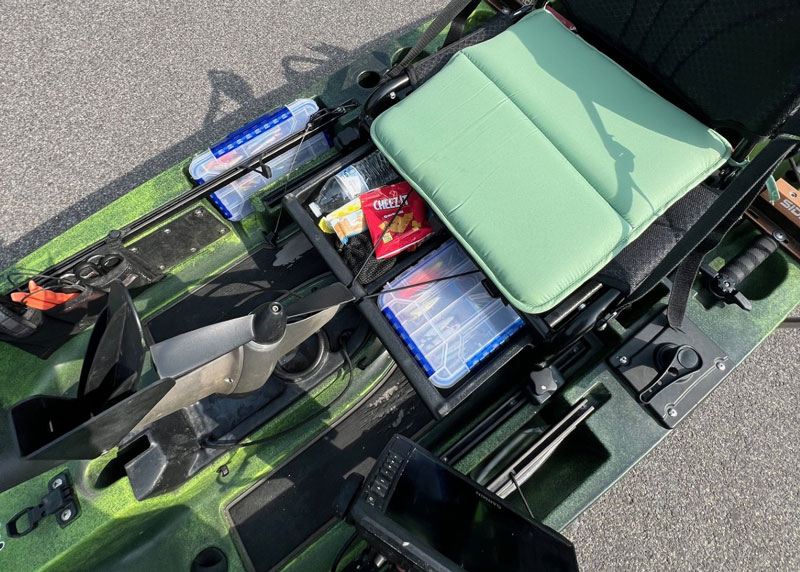You launched your fishing kayak and thought that you were ready to take that first cast, but you forgot to change your bait before you launched... Now, where did you put that box of plastics? Where did you stow those quarter ounce jig heads? Where are the snips? Finding and reaching for your gear can pose problems if it’s not properly stowed away on your kayak.

Today’s fishing kayaks are built with various locations for storage. There are hatches, tiedowns, and spaces to place your tackle storage boxes and tools. You should utilize them to fit your specific needs. It’s all about maximizing your storage and having easy access to your tackle while out on the water. Proper planning and a dedication to placing each item in its proper location every time, so you can recall where it is and reach it easily when you need it, is key to success.
I have a place for each item that I might need during the day. Pliers, scissors, and lip grips are stored in a tool pouch to my right; the baits that I picked for the day are in waterproof stowaway utility boxes stored in a drawer under my seat and a storage space on starboard gunnel; the port side gunnel storage space holds all my plastics. A storage crate, located behind my seat and strapped to the kayak, holds a battery for the electronics, leader material, a first aid kit and other items. To find more about crate storage systems read “The Great Crate Debate.”
Your tools can also be stored in a rail-mounted toolholder for easy access, so they aren’t scattered on the floor of your boat where they may get kicked over the gunnel and down into Davy Jones locker. For your wallet, fishing licenses, permits, and paperwork, get a waterproof polycarbonate storage box you can put in the crate. Secure it with a lanyard for an extra level of protection. It’s also good to carry a dry bag for a small survival kit, with things like matches, a space blanket, and a mirror. Items like this which you don’t need to access on a regular basis can be stored in a hatch, along with must-haves you want to keep onboard like rain gear. These will be tougher to get to, but you shouldn’t need to take them out very often. Most of the items going into a hatch compartment should also be placed in a waterproof storage bag for additional protection.
What I have discovered through the years is that it’s best to keep your storage solutions as simple as possible. Take only what you need for the day and keep all your items in the same location on each and every outing. This removes doubt and saves time finding a tool or a bait when you need it asap. If I need an item, always know where to reach for it without hesitation—so I can take that next cast without hesitation.

-By Eric Packard